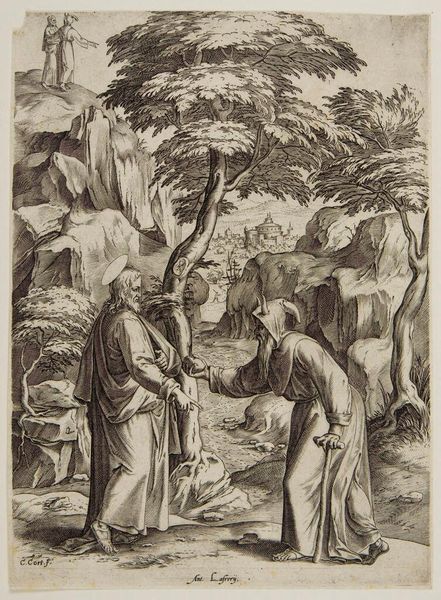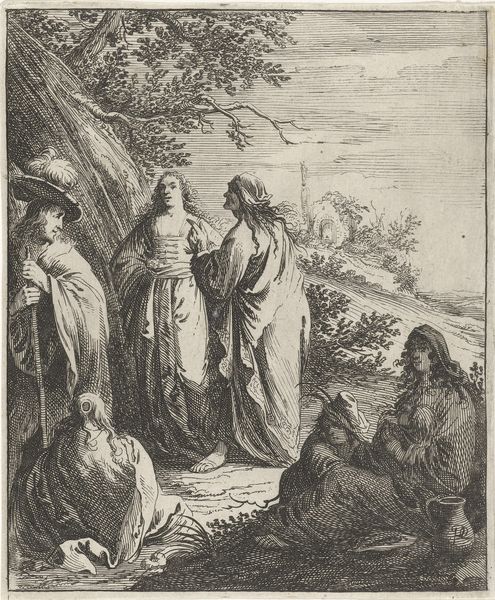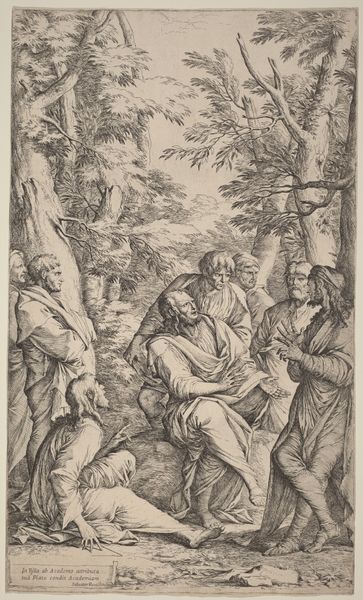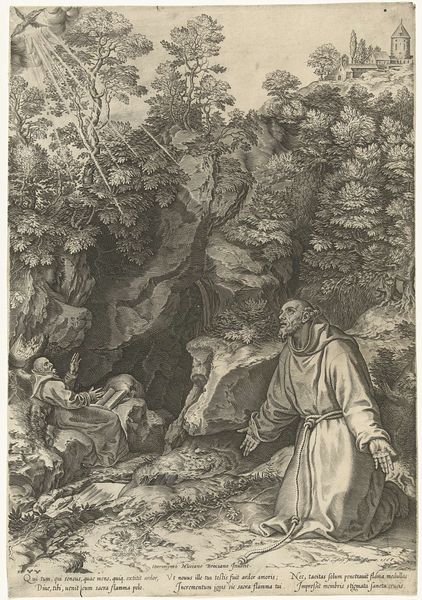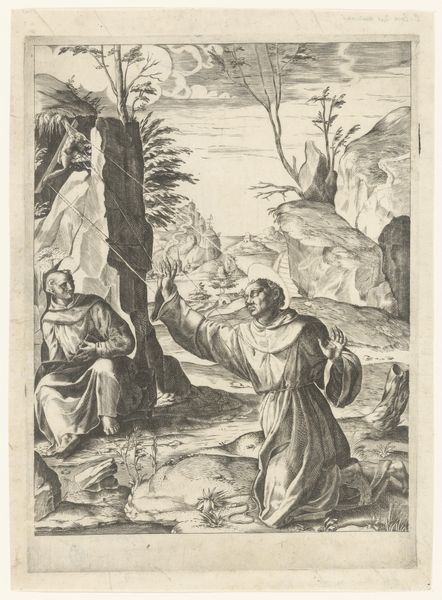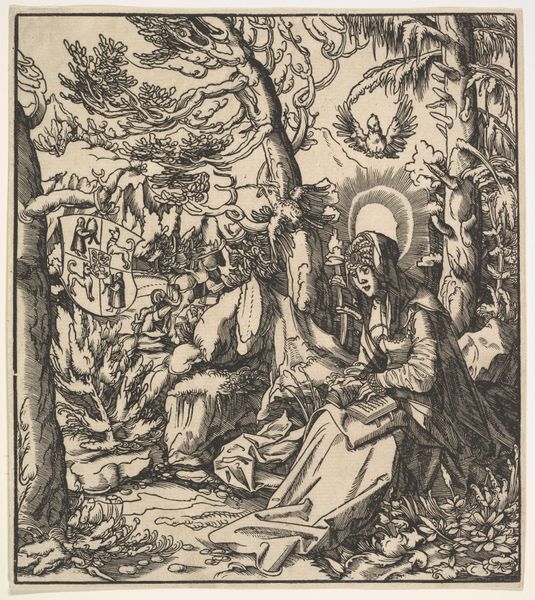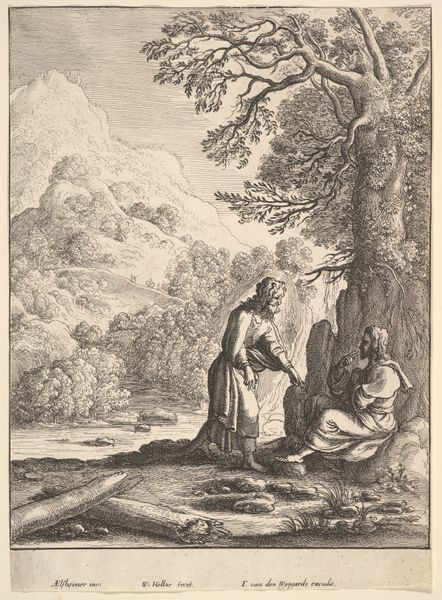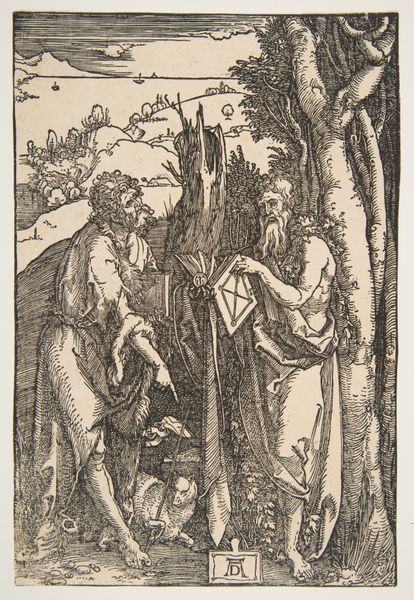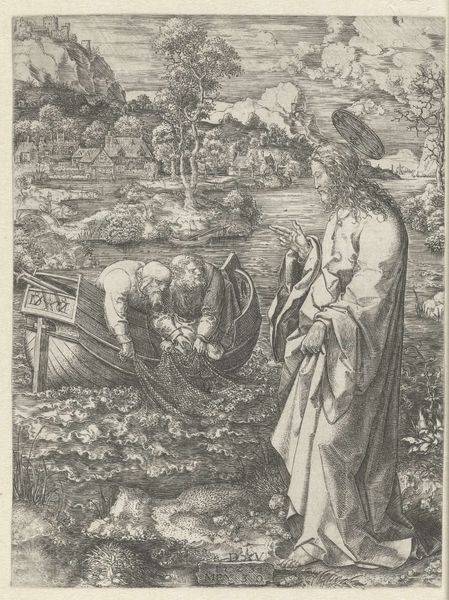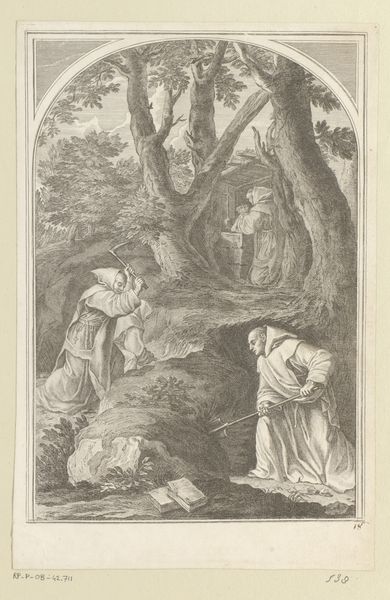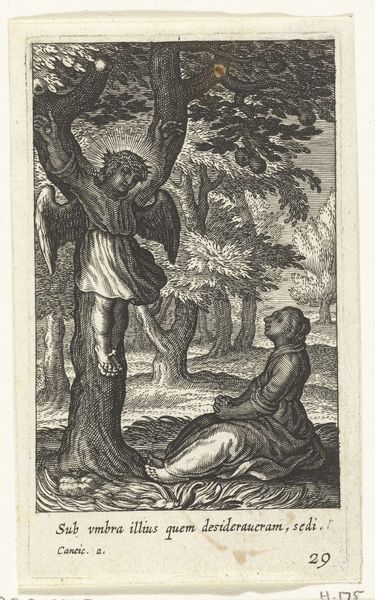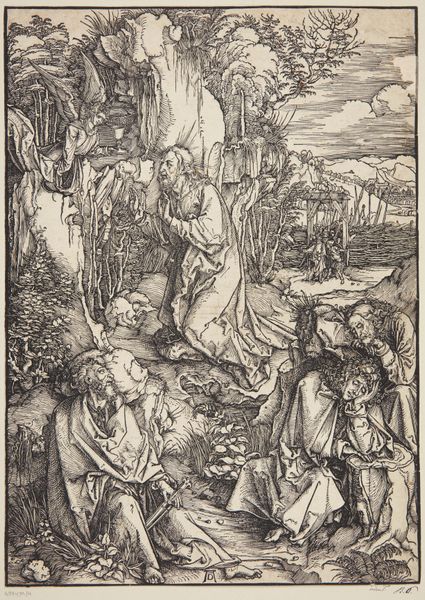
print, engraving
#
baroque
# print
#
landscape
#
figuration
#
history-painting
#
engraving
Dimensions: height 284 mm, width 208 mm
Copyright: Rijks Museum: Open Domain
Curator: This is Cornelis Cort’s "The Temptation of Christ," an engraving from 1602, housed here at the Rijksmuseum. What's your immediate reaction? Editor: The stark contrast in values immediately grabs my attention. The dense cross-hatching creates deep shadows, particularly around the devil and in the craggy landscape, giving the scene an almost oppressive feel. Curator: Indeed. Consider the political landscape of Europe at the time. The Catholic Church, while a major patron of the arts, also faced internal challenges. Images of temptation served as potent reminders of the ongoing battle between good and evil, influencing social conduct. Editor: I'm drawn to the arrangement of figures. The positioning of Christ on the left, and the devil to the right, makes use of traditional associations within pictorial space. Note also the scale difference in the background figures – does that influence the story or our emotional access? Curator: Precisely. The devil's physical posture – leaning forward, almost pleading – reveals a complex and dynamic visual rhetoric reflecting how society viewed such concepts as 'sin' and the potential 'loss of soul.' Editor: Speaking of physical, notice the textures: the soft folds of Christ’s robes versus the wrinkled, almost reptilian skin of the devil. The etcher clearly worked to provide material substance to what are traditionally invisible powers. Curator: That materialization certainly carries ideological weight. These details could influence belief and reaffirm accepted norms around temptation and piety. Editor: From my viewpoint, the interplay of light and shadow really carries this image. It shapes not just our perception, but also creates a powerful stage for these archetypal forces. It pushes the symbolic weight effectively using line. Curator: Reflecting upon it all, viewing this work reminds us that while artistry engages the eye, art also resonates deeply within social and spiritual contexts, revealing how powerful religious and political norms permeate cultural outputs. Editor: For me, diving into its design confirms the beauty lies within effective, precise and compelling interplay between lines, forms and tonality that communicates meaning over generations.
Comments
No comments
Be the first to comment and join the conversation on the ultimate creative platform.
